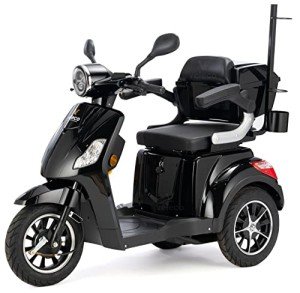Mobility Scooters: A Comprehensive Guide
Mobility scooters have become an essential mode of transportation for lots of people facing mobility obstacles. This short article checks out the different aspects of mobility scooters, including their types, advantages, functions, and a guide for prospective purchasers.
Understanding Mobility Scooters
Mobility scooters are electrically powered devices created for people with minimal mobility. They offer a way of transportation for individuals who might have problem walking but still desire to retain their self-reliance. They are available in different styles and functions to cater to a large range of requirements.
Types of Mobility Scooters
Mobility scooters can normally be categorized into 3 primary types:
| Type | Description | Best For |
|---|---|---|
| Compact Scooters | These are small and lightweight, ideal for inside and short trips. | Users with restricted storage space or those who travel often. |
| Mid-size Scooters | A balance in between portability and stability, suitable for both indoor and outdoor usage. | Those who require to cover a range of terrains. |
| Sturdy Scooters | Big and robust, designed for rugged outdoor usage and heavier people. | Users needing extra weight capacity or going off-road. |
Key Features of Mobility Scooters
The choice of mobility scooter frequently depends upon the features that line up with individual requirements. Here are some of the essential features to think about:
- Weight Capacity: Mobility scooters feature various weight limits. It is important to choose a scooter that can sufficiently support the user's weight.
- Range: The range a scooter can take a trip on a single charge varies. Depending on user needs, one might choose scooters with a variety of up to 40 miles.
- Speed: Most mobility scooters can reach speeds in between 4 to 8 mph. Consider what speed is comfortable and safe for the designated environment.
- Turning Radius: A compact turning radius is important for indoor use, permitting much easier navigation in tight spaces.
- Battery Type: The type of batteries used can impact the scooter's efficiency. Lead- visit the next website page and lithium-ion batteries are the most common.
Advantages of Using Mobility Scooters
The benefits of mobility scooters extend beyond just transportation. Some key advantages include:
- Independence: Users can navigate their environment without relying on caregivers, promoting self-reliance and self-esteem.
- Health Benefits: Using a scooter can motivate outside activity, resulting in physical and psychological health improvements by reducing sensations of seclusion.
- Convenience: Scooters can quickly be run in various environments, whether indoors, in mall, or outdoors.
Essential Considerations When Buying a Mobility Scooter
When buying a mobility scooter, numerous considerations can assist ensure that you pick the ideal design:
Assess Individual Needs:
- Mobility level: Consider just how much assistance the individual will need.
- Variety of usage: Determine where the scooter will mostly be utilized (inside, outdoors, on rough surfaces, and so on).
Test Drive:
- Always test drive several models to discover an appropriate fit. Focus on convenience, ease of steering, and the scooter's responsiveness.
Evaluation Safety Features:
- Look for scooters with sufficient security features like lights, indications, and anti-tip styles.
Examine Warranty and Service Options:
- A trusted service warranty and offered service options are essential for long-lasting usage.
Frequently Asked Questions about Mobility Scooters
1. How quick do mobility scooters go?Mobility scooters typically have speeds ranging from 4 to 8 mph, with a lot of developed for safety instead of high-speed travel. 2. Exist weight constraints on mobility scooters?Yes, mobility
scooters include particular weight limits, frequently ranging from
250 pounds to over 500 lbs, depending upon the model. 3. Can mobility scooters be utilized indoors?Certain models, particularly compact scooters, are particularly developed for
indoor use and are much easier to steer in tight areas. 4. How frequently do the batteries need to be replaced?Battery life can differ based on usage, but normally, with appropriate care, batteries may last between 1 to 3 years before needing replacement
. 5. Are mobility scooters covered by insurance?Coverage can vary, but some insurance coverage plans, consisting of Medicare and Medicaid, might cover part of the cost. It's recommended to examine with private insurance service providers. Mobility scooters act as a
important tool for numerous people, allowing them to preserve
their freedom and self-reliance. By understanding the various types and features of mobility scooters, individuals can make educated choices tailored to their specific needs.
Whether used for errands, interacting socially, or leisurely activities, mobility scooters can improve the quality of life for those with mobility constraints. Investing in a mobility scooter is a decision that can considerably affect a person's life. Therefore, individuals need to thoroughly assess their alternatives and choose a model that best aligns with their lifestyle and mobility requirements
.

